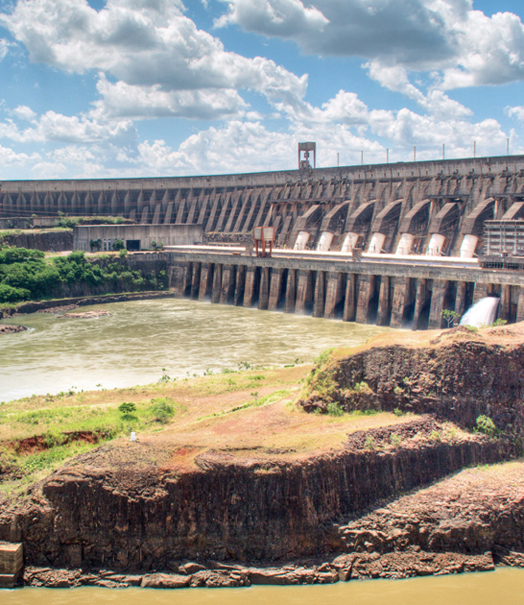1984
Itaipu Dam
There are many reasons for engineers to build a dam, but one of the most compelling is for electricity. A big hydroelectric dam can produce a surprising amount of power and it is some of the cleanest and most dependable electricity possible. It is also a very easy form of electrical production to control. Simply adjust a sluice gate and a generator produces more or less power.
The Itaipu Dam, which opened on the border between Brazil and Paraguay in 1984, is the largest hydroelectric facility in the world in terms of power production—it produces nearly 100 terawatt-hours of electricity per year. For comparison, the average American home uses approximately 11,000 kilowatt-hours per year, which means this dam could power about nine million American homes. Since average home power consumption in Brazil is about one sixth of that in America, Itaipu Dam can power over 50 million homes.
How is it possible to harness so much electricity? It starts with a really big river. The Parana River is the seventh largest river in the world. At one time, it also boasted the biggest waterfall in terms of water volume, but this waterfall is now submerged in the lake behind the dam. On average, something like 4.5 million gallons (17,000 cubic meters) per second of water discharges into the river’s delta.
That’s a lot of water, and at that point of the dam most of the river’s water is flowing through twenty giant water turbines connected to generators. Each generator is capable of producing 700 megawatts, which is the equivalent of a good-sized city power plant. In other words, this single dam produces the power of twenty traditional power plants. Half of the power is Paraguay’s, and half is Brazil’s.
The dam itself is enormous—over a mile long and 640 feet (196 meters) high, made of concrete. The lake behind the dam is also enormous—520 square miles (1,350 square km). The lake serves as a source of drinking water as well as an important flood-control mechanism. For these reasons Itaipu was named one of the seven wonders of the modern world by the American Society of Civil Engineers.
SEE ALSO Light Water Reactor (1946), Three Gorges Dam (2008).

Aerial view of a pumped storage hydro power station in Germany.